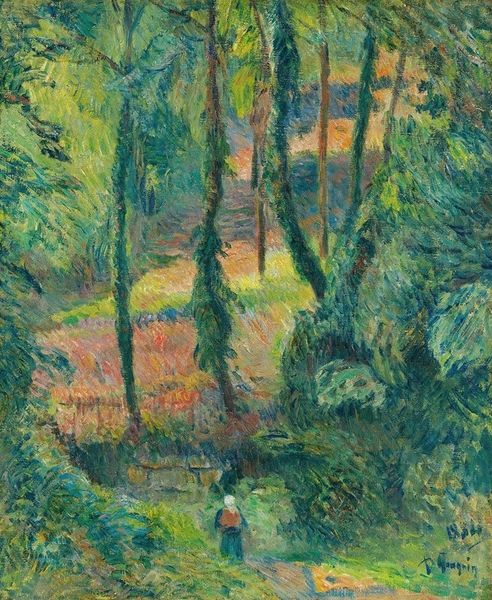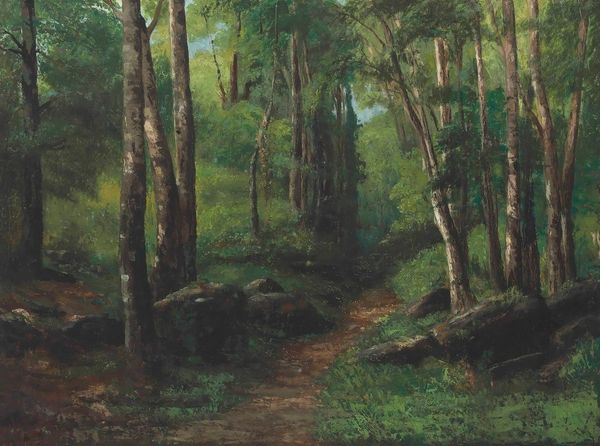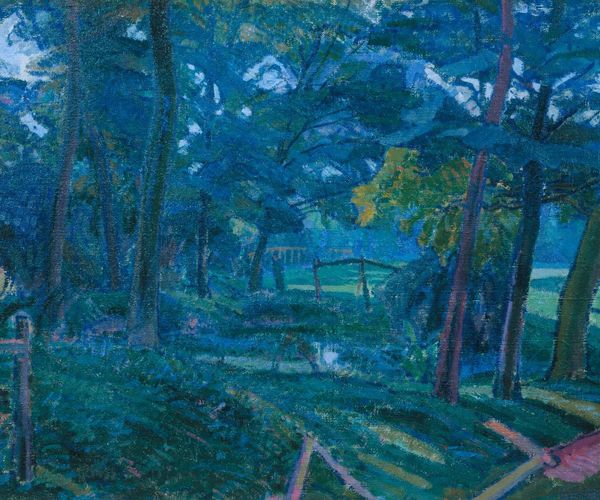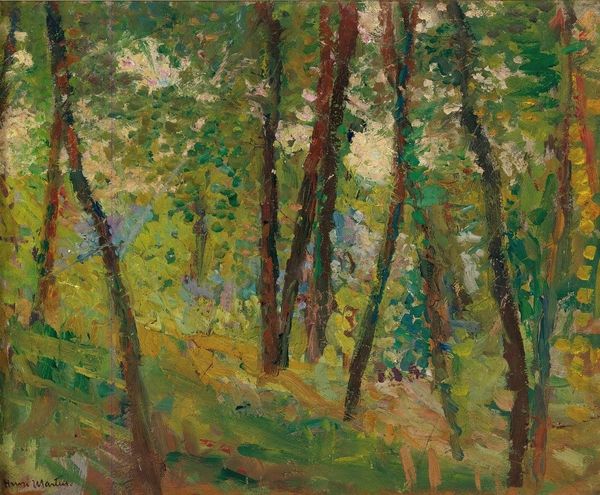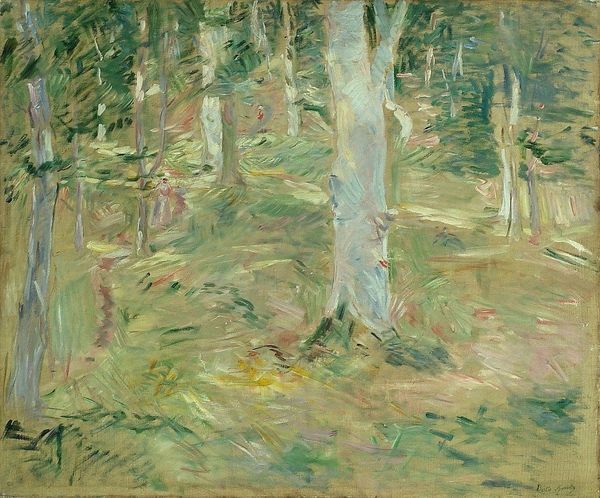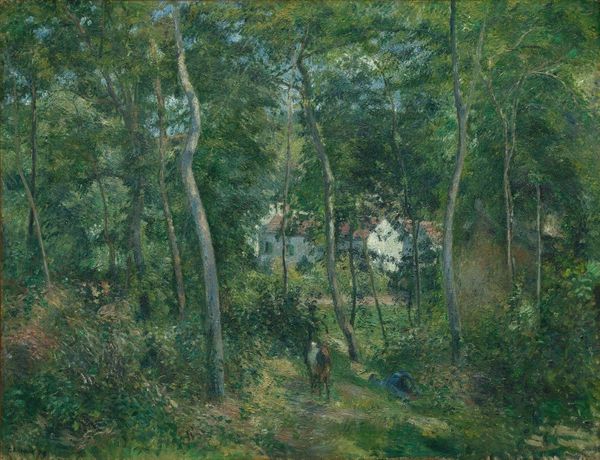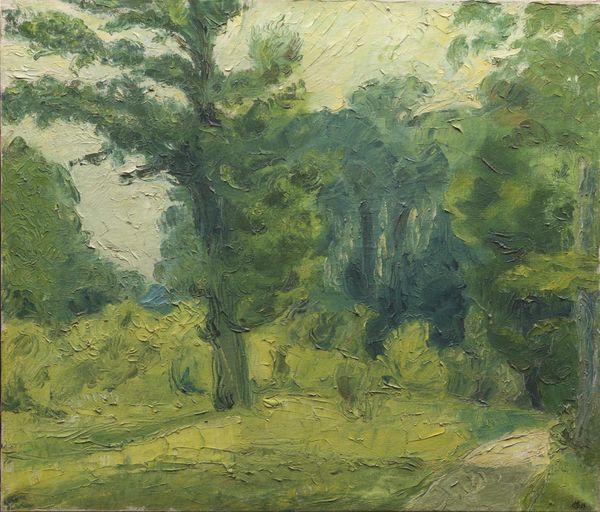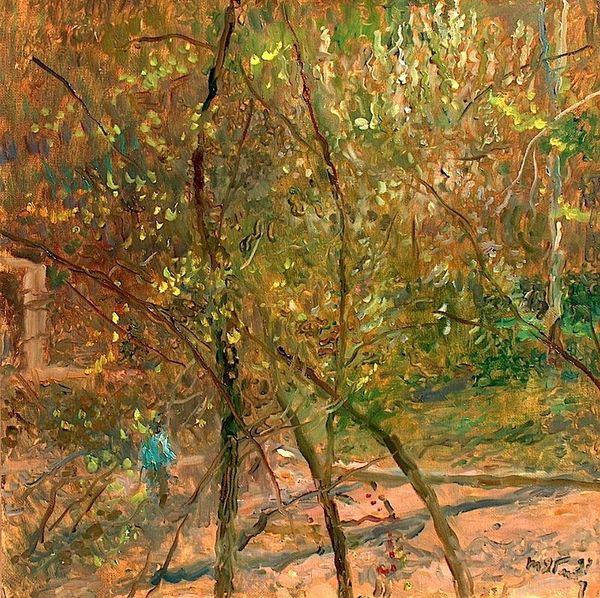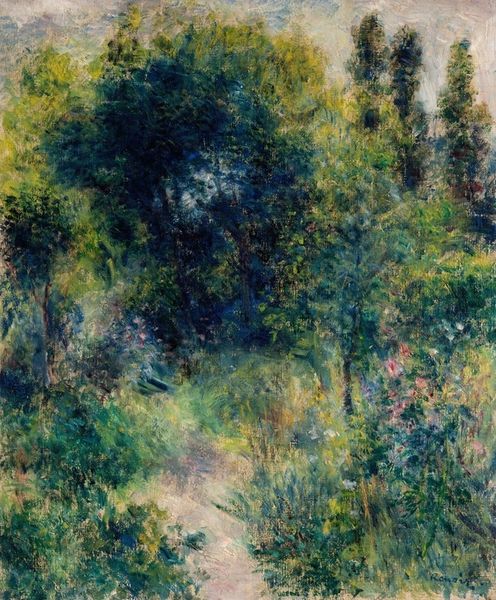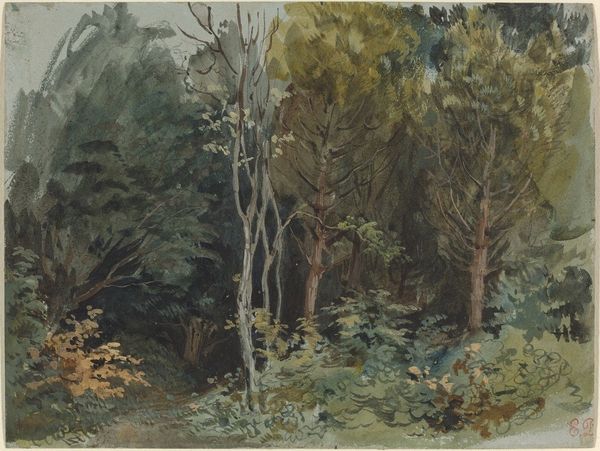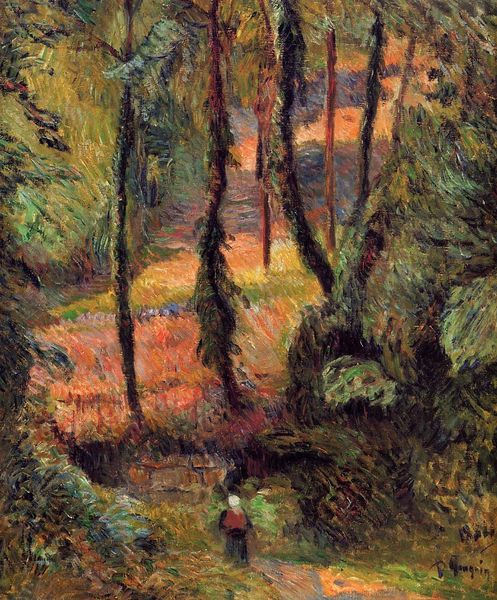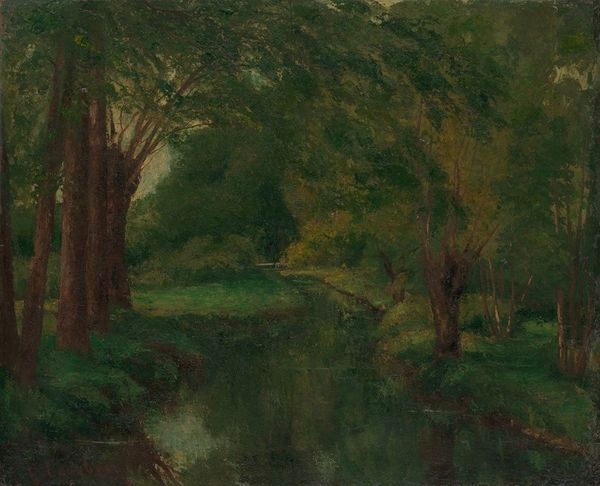
painting, oil-paint
#
painting
#
impressionism
#
oil-paint
#
landscape
#
impressionist landscape
#
figuration
#
form
#
post-impressionism
Copyright: Public Domain: Artvee
Paul Cézanne painted "Interior of a Forest" with oil on canvas, capturing a dense woodland scene. Cézanne, working in France during the late 19th century, was at odds with the traditional French Academy. During this period, artistic institutions shaped what was considered 'good art', often favouring historical or portrait painting over landscapes. Cézanne, part of the Post-Impressionist movement, challenged these norms. He depicted nature in a way that emphasized form and colour over idealized representation, prefiguring the modernist movements of the 20th century. Forests held symbolic importance at the time, representing an escape from industrial life. Cézanne’s painting presents nature as a space of visual exploration and rejects the academic definition of beauty. As historians, we look at how these paintings reflect and resist the dominant social and artistic values of their time. We delve into exhibition records, art criticism, and artists’ letters to build a richer understanding of the period, revealing the complex dialogue between the artist, the art world, and wider society.
Comments
No comments
Be the first to comment and join the conversation on the ultimate creative platform.
